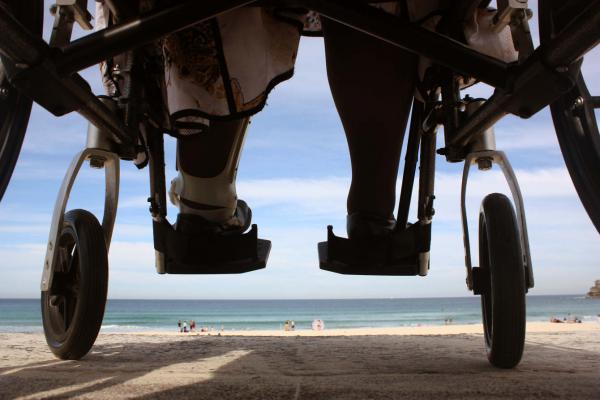
Making Meaning: Art as acts of care
Meaning Making – art as acts of care connects two largely hidden populations: carers and artists in translating and luminating the experience of caring into art and social spaces. Danica Knezevic is a multi media performance artist and carer. The performance work taps into the unspoken and deep interpersonal connections embedded in care. The performance draws attention to the intangible value of time – time to notice, time to be present – time to connect. This kind of care isn’t the kind that fits an audit but it is one that we need to honour as part of our community well being.
The live artwork is part of a larger UTS digital art project which is a collaboration between the UTS Centre for Carers Research, the UTS Faculty of Transdisciplinary Innovation & funding support from a Social Impact Grant from the UTS Centre for Social Justice and Inclusion.
Listen to Danica's and Leila's interview with 2SER on the Making Meaning live performance here.
Listen to Leila's interview with ABC Radio National on her experiences as a young carer and staff member at UTS here.
Making Meaning - Art as Acts of Care.
In all of our lives we will dip into and out of caring and being cared for, regardless of our social status, simply because it is part of the human life course. The experience of caring for friends and family is one that is integral to the human condition and perhaps Covid-19 has helped us to notice this even more. Covid-19 has shone the light on the unseen work of family and friend carers particularly where professional support workers have been restricted in the work they would normally do (also a marginalised and poorly valued community). However, the work of carers is often undervalued and unseen in our communities even though one in ten of us are carers. Our public discussions often focus on regulatory protocols linked to care that don’t reach into the subtle and intimate spaces of caring. Caring is much more than ensuring essential needs are met – there’s an ecosystem of unseen dynamics that play a critical role in how we create shared dignity.
Meaning Making – Art as Acts of Care is a different kind of conversation that invites us to engage with the empathetic and embodied conditions that shape the emotional landscape of our lives. These are the invisible qualities that can make all the difference. It's a special kind of attunement that involves touch, eye contact, tone of voice and attendance to tiny personalised details such grooming, food seasoning or scent.
The performance work taps into the unspoken and deep interpersonal connections embedded in care. The performance also invites participation while drawing attention to the intangible value of time – time to notice, time to be present – time to connect. This kind of care isn’t the kind that fits an audit but it is one that we need to honour as part of our community wellbeing.
The project is a phased conversation that involves an online exhibition of video and photographic artworks created by Danica Knezevic who is a multimedia performance artist and carer. Following the online exhibition Tania Teague, Carer-in Residence at the UTS Centre for Carers Research, will engage in a recorded conversation with Danica reflecting on their shared experiences and the carer’s journey. The final phase of this project involves a live performance at UTS by Danica in celebration of National Carers Week.
At each stage of the project artworks will be shared across social media and seek interactive contributions which will feed into creating a map where shared meanings can be explored.
This project is supported by the UTS Centre for Social Justice and Inclusion and a key thread in this work involves seeking to create collective impact starting with its home, the UTS community. Being a carer can be a lonely and isolating journey where friends, work and social life fall away. The project aims to reach out to carers across UTS with a special focus on student carers who are an under-represented group. In raising their visibility the project aims to encourage personal and social responsibility towards carers and broaden conversations about carers. Covid-19 has disrupted much of our lives and one thing that rings through is the significance of care - how we can recognise its value and improve the web of supporting conditions.
Artist Abstract
The understanding of care: caregiving and receiving is fundamental in the way in which we function as individuals, families and as communities. Physically, the action of caregiving is both endurance and enduring. Within the relationship to performance art, caregiving is enduring through the body, duration and engages with the audience in experience through action. Within the traditional context of family, the connections established in infancy are then mirrored in adulthood through the mother (as) or primary caregiver. In this instance the female role often becomes the primary model of caregiving.
Within this fundamental relationship, the self acts for the other in an exchange that determines the understanding of self and its position in the world.
Caregiving and receiving are largely invisible interactions that are transferable to performative practice. The Self and Other are positioned in this project as being inextricably linked in the act of caregiving. This is particularly resonant in a family dyad, where physical and emotional caregiving is required for a family member, here considered as the other. This practice-based research establishes performative works that evoke the reciprocal nature of caregiving and receiving and the exchange of Self and Other through the caregiving process.
My art practice is based on the relationship of Self and Other through caregiving as the performer has an ethical responsibility to the audience or participants. This profound intimate action of caregiving: a performative act that is based on the relationship of artist and audience (Self and Other). The relationship of Self and Other is an ongoing negotiation that is identified through the carer as Self and the care-receiver as Other. In performance practice this is mutually recognised as the performer as Self and the audience as Other. However, these identifiers of Self and Other are exchanged in the caregiving process, as there are two selves that have their own identity, their own needs and wants.
The intimate and focused relationship of caring can cause what I refer to as a Dissonance of Self, in which a reciprocal outcome affects both caregiver and receiver due to the duality of caregiving.
In looking at these artworks, what do you notice about caring? How is caring meaningful for you?
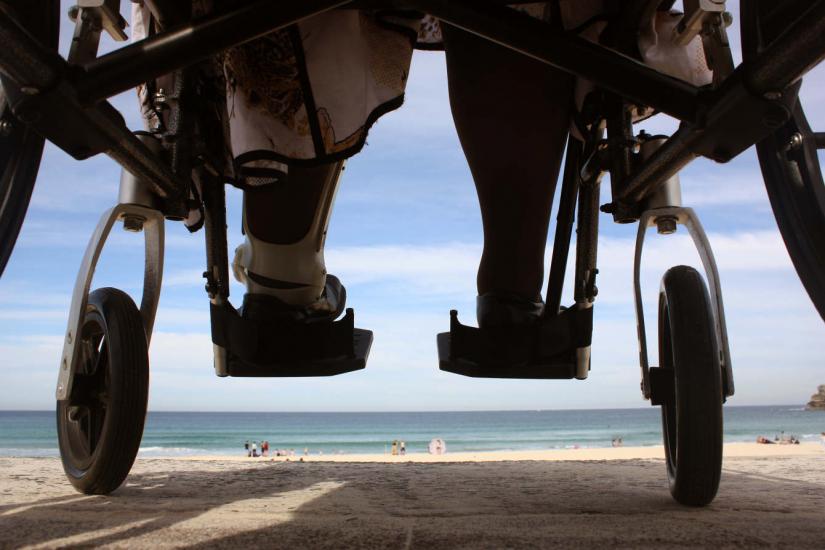

A video performance: no dialogue, loud mechanical noises.
Carer packing and unpacking the boot of their car with a motorized wheelchair.
It is an extension of her limbs, while traveling within and without of the house.

Video only: No audio
[View of elderly hands, a grandmother unconsciously enacting the action of knitting empty handed while sleeping (in hospital) and later while awake, consciously knitting with knitting needles and colourful thread.]

Video-performance installation: No audio
[We see four female family members of varying ages and physical abilities.]
[Each person occupies the doorway individually, making their way into and through the light, looking to us, the viewer- their destination is an unseen space.]
[A family member follows the previous closely in a circuit, the momentum is constant, and their own version of steady]
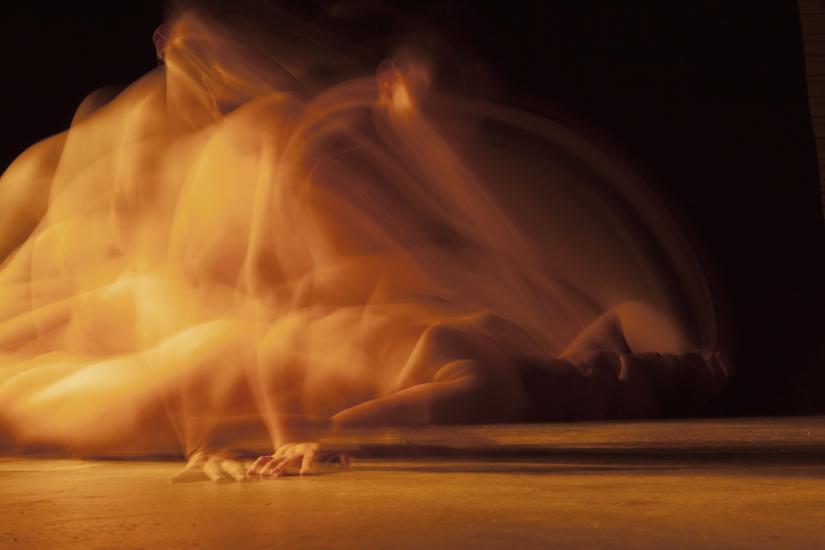
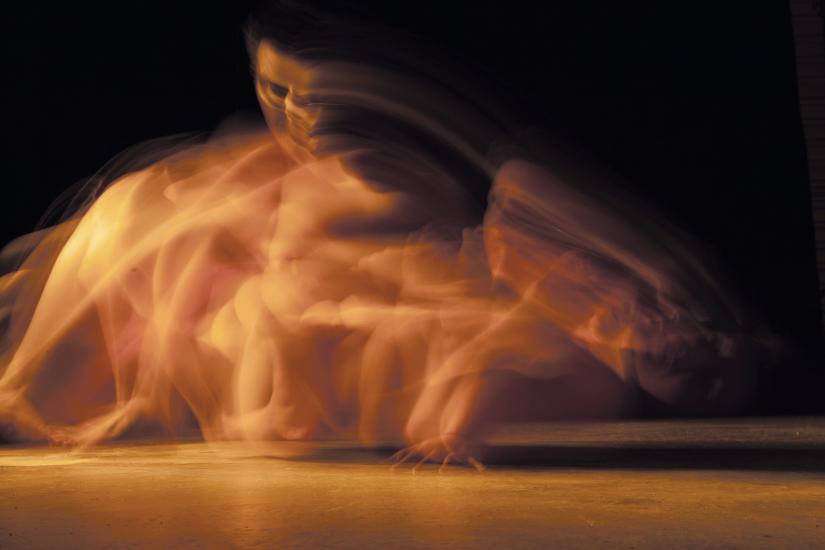
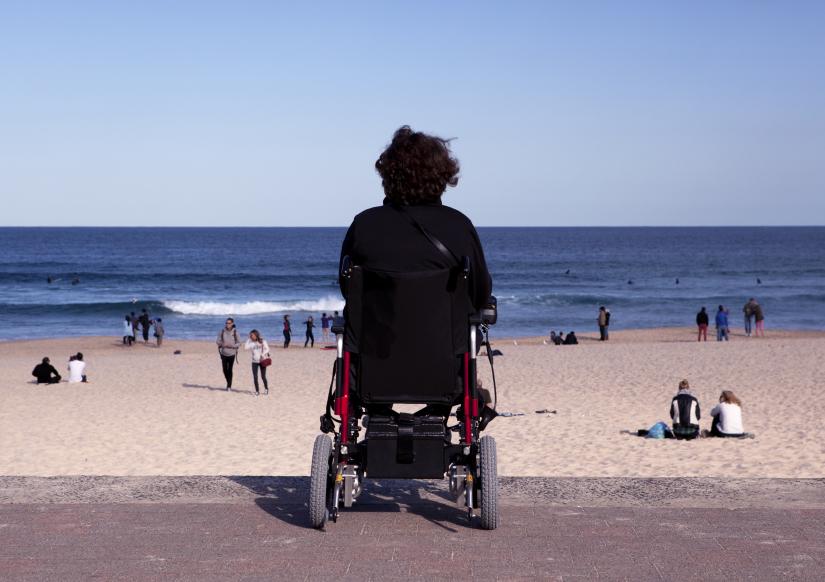
To share your thoughts on the work or on the question "How is caring meaningful for you?" please email us at:
